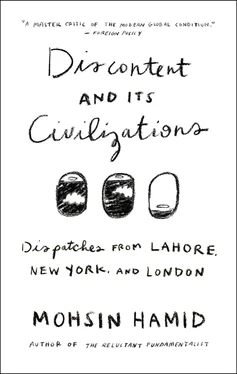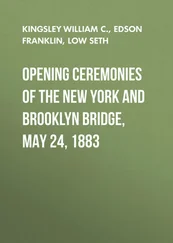But following the terrorist attacks of September 11, linked to members of al-Qaeda living under Taliban protection in Afghanistan, the US returned to the region in force and demanded that Pakistan choose sides. President Pervez Musharraf’s subsequent decision to align Pakistan with the US was perceived by many militants as a “betrayal.” Still, Musharraf hoped the Pakistani military’s conflict with its infuriated jihadist offspring could be circumscribed, that it might be possible “to drive a wedge between the Pakistani militants and the al-Qaeda foreigners.”
This plan, besides denying the extent of the militant threat to Pakistan, was also undermined by US strategy, a strategy that suffered from the outset from what Hussain identifies as two “fundamental flaws.” The first of these was a failure to understand that unless Pashtun grievances were addressed — particularly their demand for a fair share of power — the war in Afghanistan would become “a Pashtun war, and that the Pashtuns in Pakistan would become… strongly allied with both al-Qaeda and the Taliban.”
As the US campaign in Afghanistan began, Hussain writes, Musharraf “warned the United States not to allow the [Northern] Alliance forces to enter Kabul before a broad-based Afghan national government was put in place.” But the US ignored this advice, and later, at the Bonn conference of December 2001, Hamid Karzai was installed as chairman (and subsequently president) as Pashtun “window dressing, while the Northern Alliance took over the most powerful sections of the government.”
By backing the Northern Alliance against the Taliban and then failing to include a meaningful representation of Pashtuns in a power-sharing deal in Kabul, the US not only sided with India in the Indian — Pakistani proxy war in Afghanistan, it also elevated a coalition of Afghanistan’s smaller ethnicities above its largest ethnic group, the Pashtuns. Conflict was inevitable, and since twice as many Pashtuns live in Pakistan as in Afghanistan, it was also inevitable that this conflict would spill over the border.
The results for Pakistan were catastrophic. Over the following decade, as Hussain describes in detail, the Pakistani military’s attempts to separate “good” militants from “bad” foundered. Instead, strong networks developed between radical groups in Pakistan’s Punjabi east and those in its Pashtun west. With each move of the Pakistani military against them, the frequency and lethality of counterattacks by terrorists inside Pakistan, on both military and civilian targets, intensified. Pakistani casualties soared.
—
THE ONLY WAY OUT of this trap, in which an unwinnable “Pashtun war” threatens to swamp an essential Pakistani program to neutralize militants, Hussain suggests, is to address the second “fundamental flaw” in US strategy: the “failure to appreciate that combating the militant threat required something far more than a military campaign,” namely a “political settlement with the insurgents, requiring direct talks with the Taliban.”
Equally vital, it must be added, is a push toward political settlement between India and Pakistan over Kashmir. This simmering conflict fuels the Indian — Pakistani proxy war between the Northern Alliance and the Taliban in Afghanistan, encourages the Pakistani military’s embrace of militants, and helps subordinate Pakistani civilian governments to the Pakistani military (by allowing a near-perpetual state of security crisis to be maintained in Pakistan). The outlines of a deal on Kashmir were reportedly secretly agreed upon in 2007, but progress has been frozen since Musharraf’s fall from power in 2008 and the terrorist attacks on Mumbai that same year.
As a presidential candidate, Barack Obama acknowledged Kashmir’s central role. “The most important thing we’re going to have to do with respect to Afghanistan is actually deal with Pakistan,” he said in October 2008. “We should probably try to facilitate a better understanding between Pakistan and India, and try to resolve the Kashmir crisis so that they can stay focused not on India but on the situation with those militants.”
Once he was elected, however, talk of Kashmir and peace between India and Pakistan receded from President Obama’s official pronouncements, and he embarked upon an Afghanistan policy that might be described as “shoot first, talk later.” US drone strikes in Pakistan’s Pashtun belt intensified, with more—53—in 2009, Obama’s first year in office, than during the entire Bush administration—42—followed by a further sharp increase in 2010, to 118. This unmanned assault was accompanied by a tripling of US military manpower in Afghanistan, which in turn resulted in a fourfold increase in the American fatality rate, with more deaths there of US soldiers in twenty-nine months under Obama (974) than in eighty-seven months under Bush (630).
Obama has now begun to reverse his Afghanistan escalation. His June 22, 2011, speech announced that 33,000 US forces (described as those of his “surge,” but more accurately representing the second of his two roughly equal-sized surges) would begin withdrawing this summer and be gone by the end of the next. There will then, he said, be a “steady pace” of further reductions until by 2014 the change of mission “from combat to support… will be complete.” He also stated that “America will join initiatives that reconcile the Afghan people, including the Taliban.”
The following day, in an interview with the Voice of America, Obama acknowledged a US “focus shifted to Pakistan” and declared:
I think what’s happened is that the [US — Pakistan] relationship has become more honest over time and that raises some differences that are real. And obviously the operation to take out Osama bin Laden created additional tensions, but I had always been very clear with Pakistan that if we ever found him and had a shot, that we would take it. We think that if Pakistan recognizes the threat to its sovereignty that comes out of the extremists in its midst, that there’s no reason why we can’t work cooperatively.
The tone of Obama’s underlying message to Pakistan is certainly much improved from that of the US in September 2001, when Deputy Secretary of State Richard Armitage reportedly told Pakistan to cooperate with the imminent US campaign in Afghanistan or be prepared to be bombed “back to the stone age.” But implicit in Obama’s words, and explicit in his actions, is a continued willingness to escalate US armed intervention in Pakistan should Pakistani cooperation prove insufficient. The alliance between the US and the Pakistani military remains, therefore, a relationship between parties viewing one another through gunsights. Each side blames the other for putting its citizens in grave danger, and each is correct to do so.
—
A GUNSIGHT IS NOT, however, the primary lens through which King’s College professor and former London Times journalist Anatol Lieven sees Pakistan. Quite the opposite: his Pakistan: A Hard Country , by far the most insightful survey of Pakistan I have read in recent years, reflects sensitivity and considerable, if clear-eyed, affection. Lieven has traveled extensively through Pakistan (dismayingly atypical for a contemporary foreign commentator), exploring all of its provinces and speaking with Pakistanis from a very broad range of backgrounds. He has also immersed himself in written sources, including pertinent anthropological research produced over a period of some two hundred years.
Pakistan’s is a diverse society, so diverse, in fact, that observers who deal best in generalizations are bound to get the country horribly wrong. Lieven recognizes this diversity and makes it central to his analysis. For him, Pakistan is a place of competing and overlapping clans, sects, tribes, beliefs, and practices. Its society, in order to function, has evolved powerful mechanisms to deal with rivalries inside shared localities. As a result, Lieven argues, Pakistan is characterized by structures — military, bureaucratic, social, political, spiritual, judicial — that are profoundly “Janus-faced,” in the manner of the two-faced Roman deity who gazes and speaks in opposite, contradictory directions. These structures, at once predatory and protective, operate to make the country both (frustratingly for reformers) very difficult to change and (bafflingly for forecasters of its demise) remarkably resilient.*
Читать дальше












